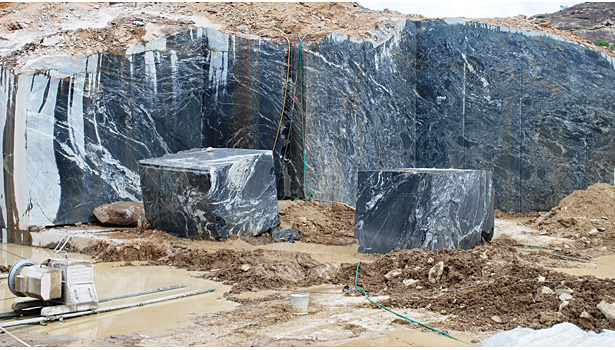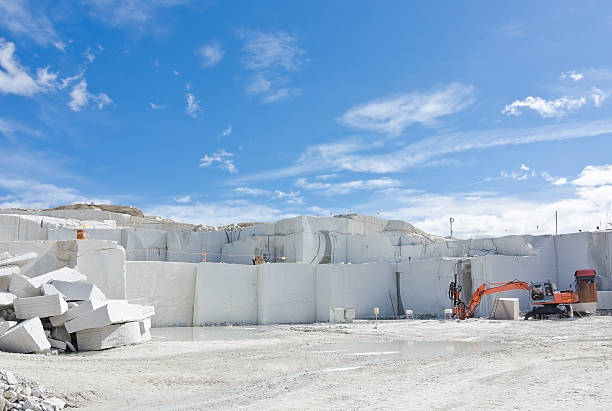Uncovering the Rich Background and Sustainable Practices of Granite Quarrying
As we stand on the precipice of discovering the detailed tapestry of granite quarrying, a journey through time discloses not just the physical act of drawing out rock yet additionally the cultural and historic importance woven right into the really material of this technique. From the old beginnings that laid the foundation for modern quarrying techniques to the sustainable practices that are forming the future of this sector, each chisel mark on granite surfaces informs a tale waiting to be discovered (granite quarries in south africa). The legacy of granite quarrying stretches much past mere extraction; it is a testimony to human ingenuity, resilience, and the enduring appeal of this stunning rock
Old Origins of Granite Quarrying
Going back to ancient human beings, the technique of quarrying granite has actually been an integral part of human history and building advancement. The earliest proof of granite quarrying days back to ancient Egypt, where massive pyramids and elaborate sculptures were crafted from this resilient stone. The Egyptians used primitive devices to draw out granite blocks from quarries, showcasing the value of this material in their monumental constructions.
Relocating forward in background, the Greeks likewise made significant payments to the quarrying of granite. The Greeks utilized granite in different building wonders, such as temples and sculptures, demonstrating their skill in shaping and carving this durable rock. The Romans even more refined the methods of quarrying granite, employing advanced tools like blades and hammers to remove and form granite for their iconic frameworks.
Through the centuries, the technique of quarrying granite has actually advanced, with modern-day technologies boosting effectiveness while keeping the classic appeal of this all-natural rock - granite quarries in south africa. From old civilizations to modern contractors, the legacy of granite quarrying remains to shape our world
Evolution of Quarrying Methods
The evolution of quarrying techniques has actually been noted by a continual progression in the direction of greater efficiency and accuracy in removing granite. Early quarrying techniques entailed manual labor with basic devices such as blades, hammers, and wedges to extract granite blocks from the earth.
In more current times, the introduction of equipment changed the quarrying sector, allowing quicker removal prices and raised productivity. Technologies such as ruby cable saws, high-pressure water jets, and pneumatic drills have ended up being common in modern quarries, enabling precise cutting and minimized waste. In addition, developments in computer-controlled devices and 3D modeling have maximized quarrying procedures, resulting in marginal environmental impact and enhanced sustainability methods. As the demand for granite remains to increase, the evolution of quarrying methods remains essential to conference industry requires efficiently and sustainably.
Social Significance of Granite
Granite holds an extensive social value throughout numerous people due to its enduring existence in building masterpieces and respected monoliths. The social value of granite prolongs beyond its physical features; it embodies durability, security, and timelessness, making it an icon of enduring legacies and customs.

Sustainable Practices in Quarrying
Amidst the rich history of granite quarrying and its social relevance exists an expanding emphasis on sustainable practices within the industry. As ecological recognition and problems concerning source deficiency have increased around the world, the quarrying market has actually progressively accepted sustainable techniques to minimize its effect on the setting and surrounding areas.

Furthermore, recovery and rehabilitation of quarry sites post-extraction are important to lasting techniques. By directory recovering quarried areas to a natural or beneficial state, such as creating wildlife environments or leisure areas, quarriers can balance out the ecological footprint of their operations and add positively to the regional community.
Tradition of Granite Quarrying
With a historic background steeped in craftsmanship and commercial development, what sustaining effect has granite quarrying left on the landscape of modern culture? The legacy of granite quarrying transcends plain extraction methods; it has actually shaped building wonders, city landscapes, and cultural heritage worldwide. The resilient nature of granite has actually made it a recommended choice for monuments, structures, and infrastructure, standing as a testament to the ability and creativity of quarry workers across generations.
Furthermore, the financial footprint of granite quarrying can not be ignored. The industry continues to provide work opportunities and drive neighborhood economic climates in regions where granite extraction prevails. It has actually also spurred technological improvements in quarrying methods and tools, causing a lot more efficient and sustainable techniques.
In regards to sustainability, the legacy of granite quarrying consists of initiatives to mitigate ecological impacts with recovery jobs and responsible resource management. By stabilizing economic dig this passions with ecological stewardship, the sector strives to ensure that future generations can remain to take advantage of this long-lasting all-natural source.
Final Thought
